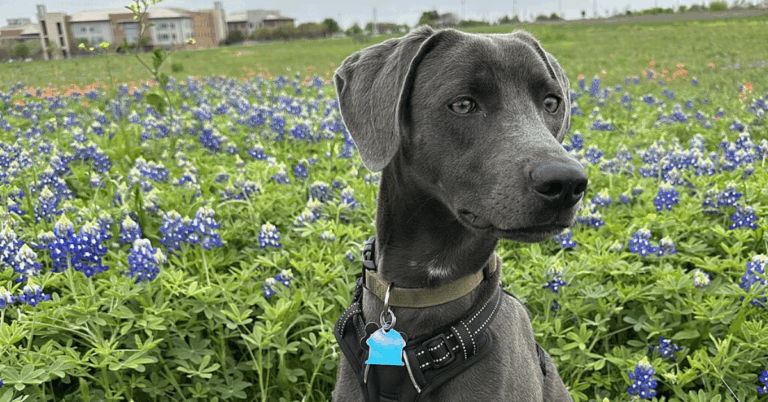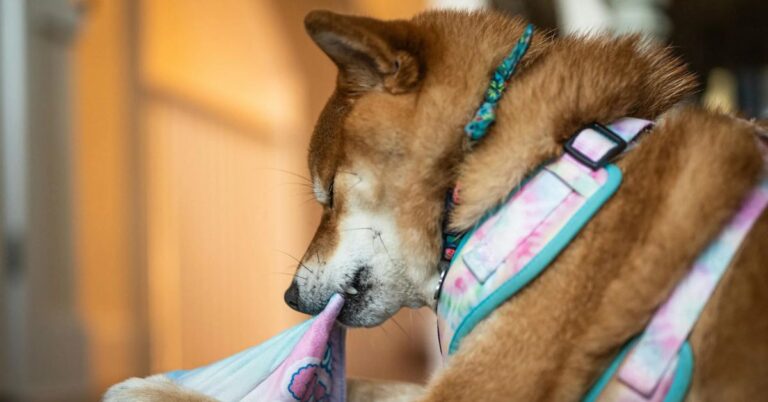30 Dog Behaviors That Seem Cute but Actually Signal a Problem
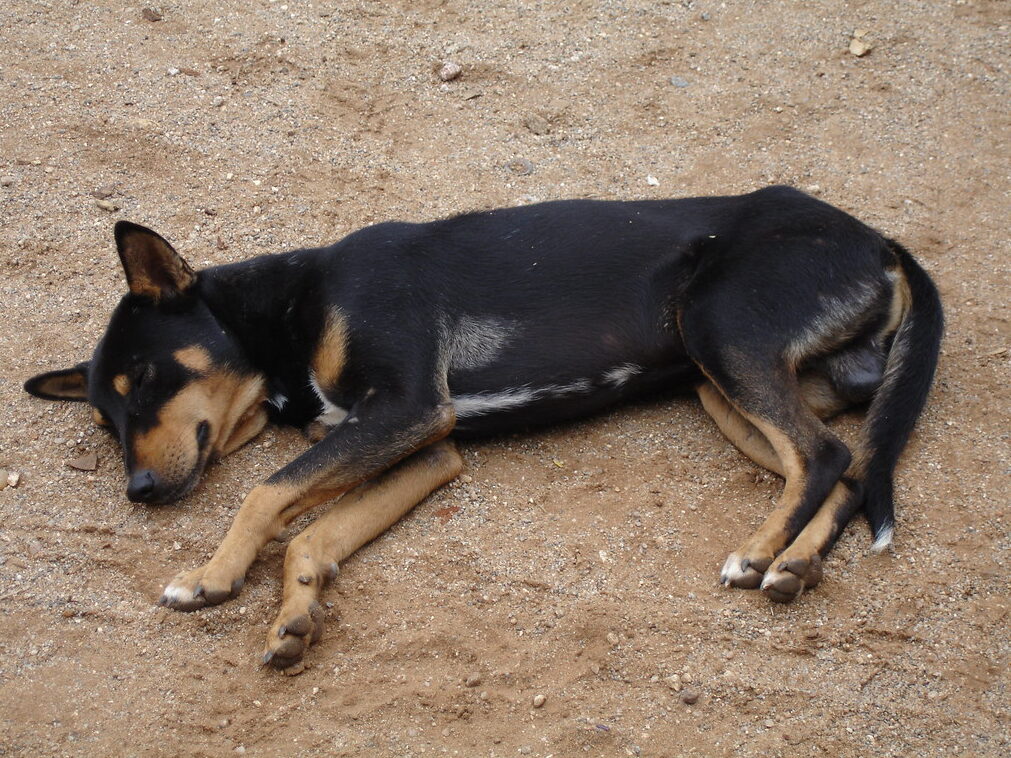
Dogs do plenty of adorable things that make owners laugh, take pictures, and share videos. But what if some of those seemingly cute behaviors are actually signs of stress, anxiety, discomfort, or even a health issue? While some habits are harmless, others may indicate an underlying problem that shouldn’t be ignored. Here are 30 dog behaviors that seem cute but could actually signal trouble.
Tilting their head frequently

A slight head tilt when you talk to your dog can look endearing as if they are trying to understand you better. However, frequent or persistent head tilting could indicate an ear infection, a neurological issue, or a problem with their balance. If your dog is tilting their head often, especially without an obvious reason, it’s important to get them checked by a vet.
Sleeping on their back with paws in the air
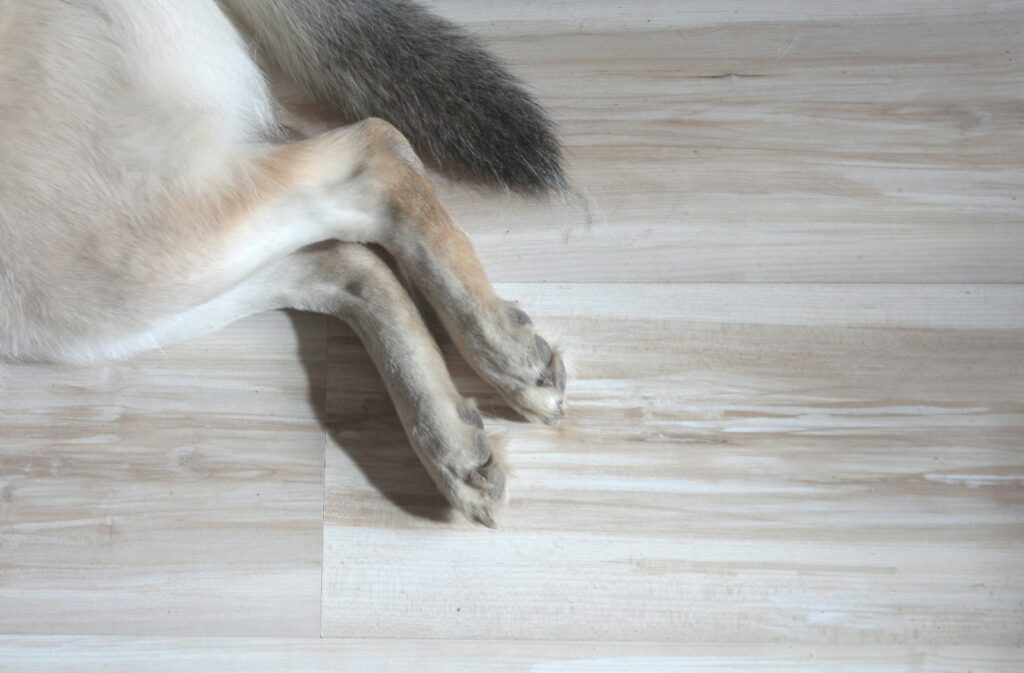
This sleeping position is often seen as a sign of trust and relaxation since it exposes the most vulnerable part of their body. However, if your dog suddenly starts sleeping this way when they didn’t before, they could be trying to cool down due to overheating or discomfort. In some cases, dogs with joint pain or spinal issues may prefer this position to relieve pressure on certain areas.
Excessive zoomies (sudden bursts of running)
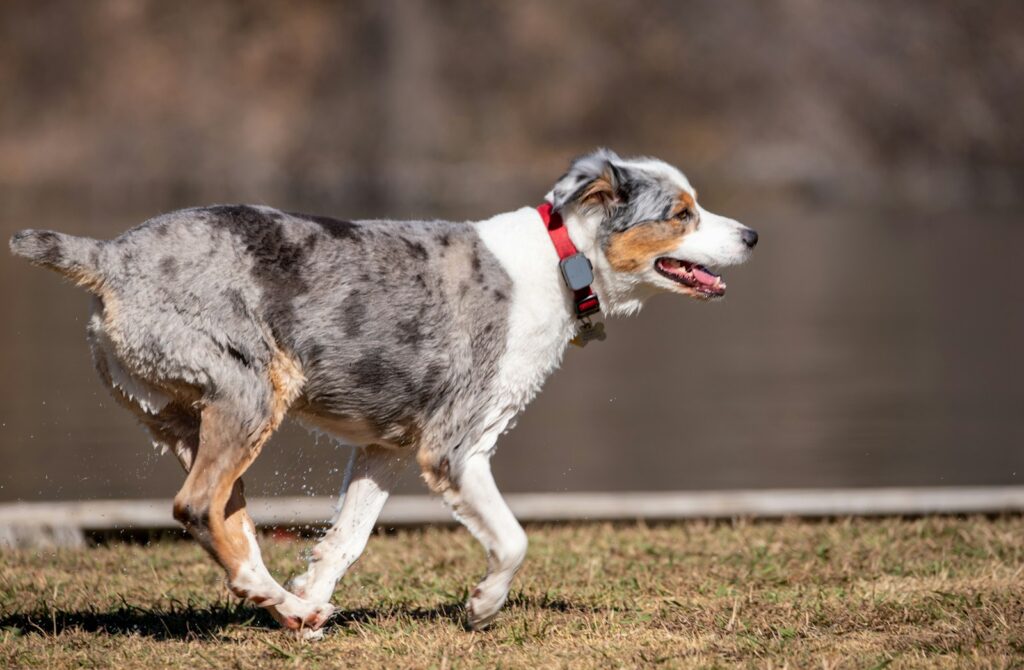
Zoomies are normal for many dogs, especially young ones, as a way to release energy. However, if your dog is constantly experiencing zoomies, even after exercise, it could mean they are not getting enough mental stimulation, are feeling anxious, or are dealing with an underlying joint issue that makes controlled movement uncomfortable.
Licking your face nonstop
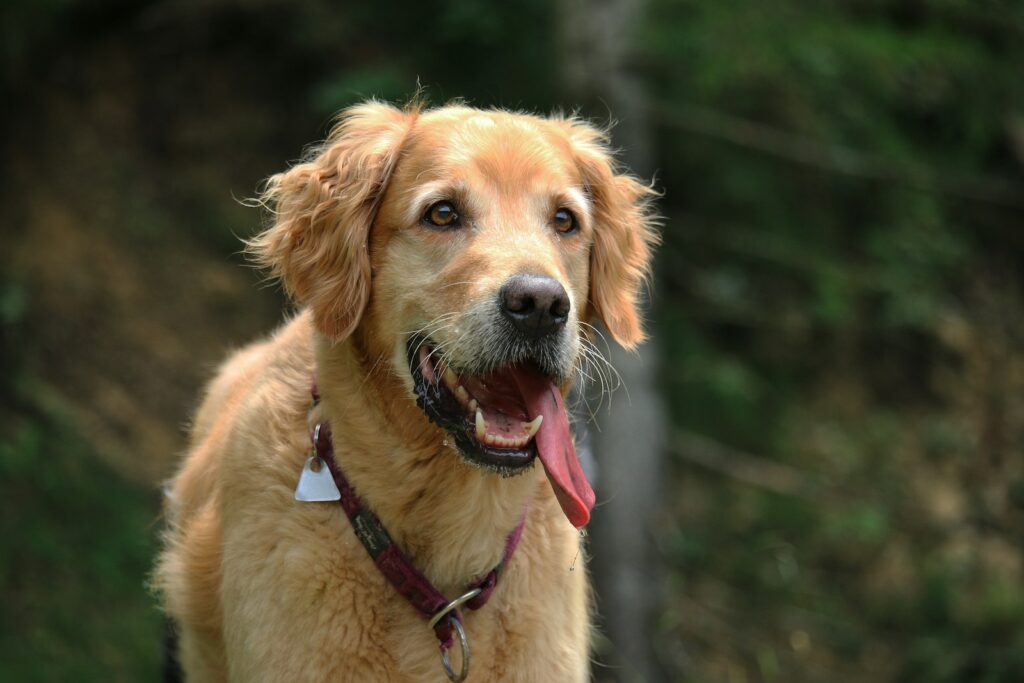
Many dogs lick as a sign of affection, but excessive face licking can sometimes be a response to stress, anxiety, or even nausea. If your dog suddenly starts licking excessively, it could mean they are trying to get your attention for something serious, such as discomfort, pain, or an underlying health issue.
Sleeping more than usual

Dogs naturally sleep a lot, but if your normally active dog starts spending most of the day asleep, it could be a sign of depression, pain, or an illness. Conditions such as arthritis, thyroid imbalances, or infections can cause lethargy, and a sudden change in sleep patterns should always be investigated by a veterinarian.
Following you everywhere

It’s sweet when your dog wants to be by your side, but if they seem unable to function without you nearby, they may be suffering from separation anxiety or insecurity. Dogs that have experienced abandonment or trauma may struggle with being left alone, which can lead to stress and destructive behavior when you’re not around.
Wagging their tail constantly

Tail wagging is often associated with happiness, but not all wags mean the same thing. A stiff, fast wag or a wag held high can be a sign of nervousness, tension, or even aggression. If your dog is wagging their tail but showing other signs of discomfort, such as pinned ears or a stiff body, they may be feeling uneasy rather than excited.
Bringing you their toys often
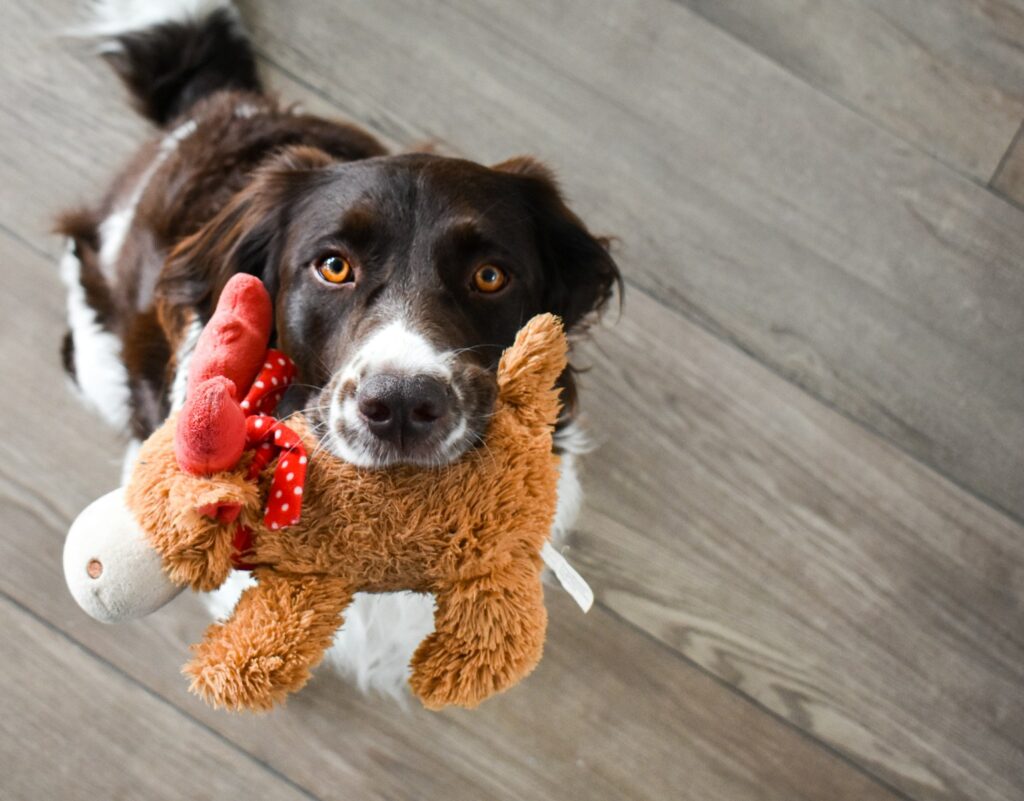
Many dogs bring their toys to their owners as an invitation to play, but if your dog is constantly bringing you toys and won’t stop pestering you, it could indicate obsessive behavior, boredom, or anxiety. Some dogs use this as a coping mechanism when they don’t get enough mental stimulation or when they’re feeling insecure.
Rolling over for belly rubs all the time
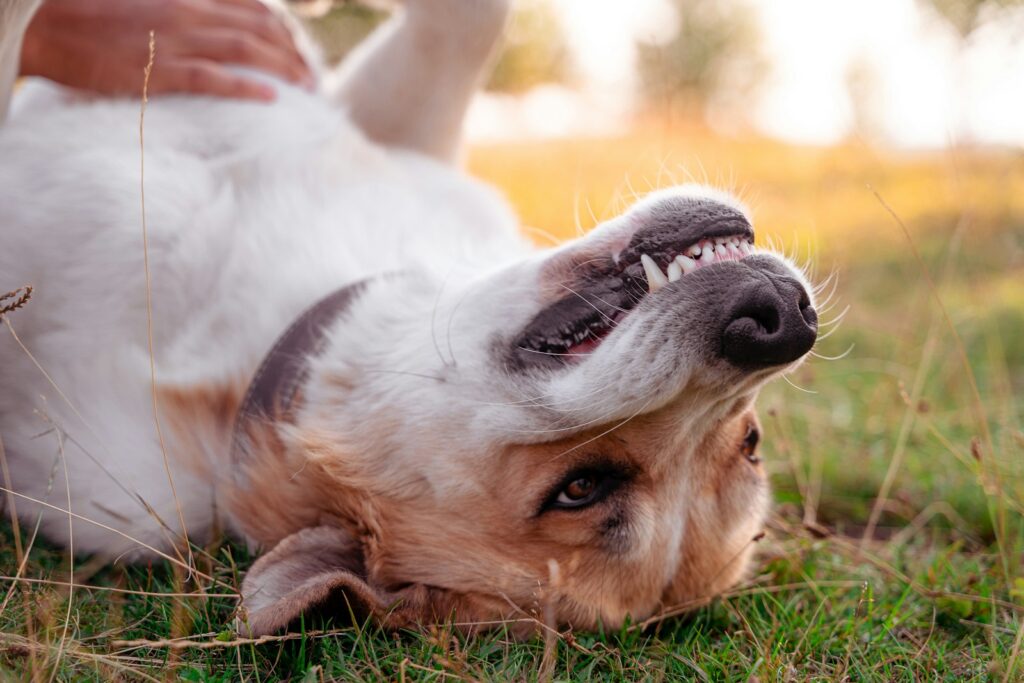
While many dogs enjoy belly rubs, rolling over is also a sign of submission. If your dog constantly rolls over in new or uncomfortable situations, they may not be asking for affection but rather trying to show deference or fear. If they do it frequently, especially around strangers or other dogs, it could indicate anxiety rather than enjoyment.
Licking their paws excessively
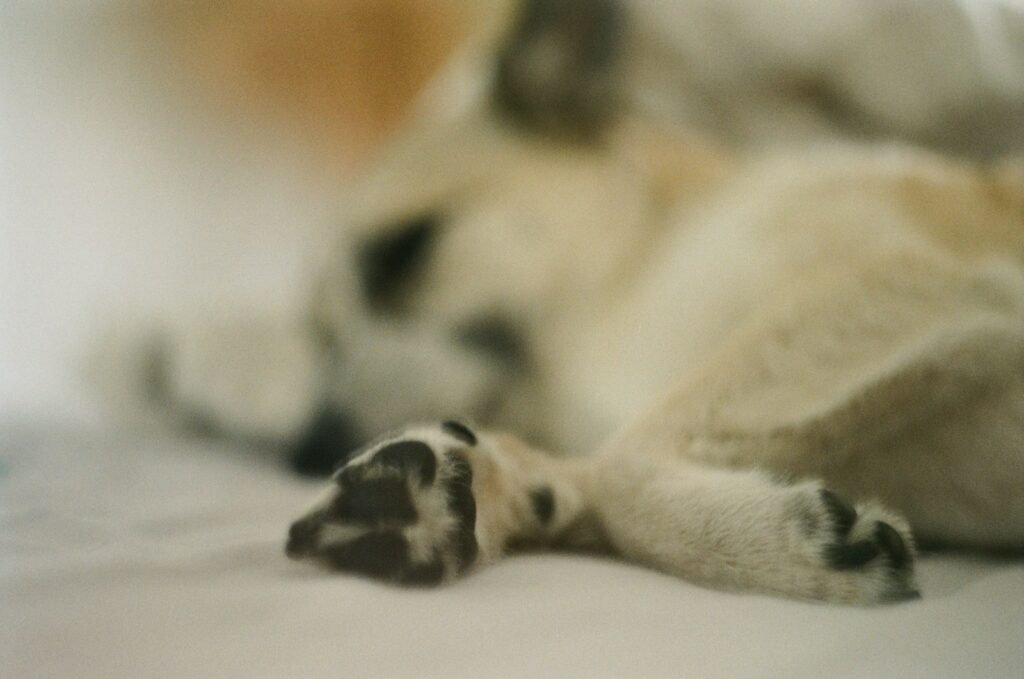
A dog licking their paws may seem like routine grooming, but constant licking can signal allergies, anxiety, pain, or an infection. Some dogs develop obsessive licking habits as a way to cope with stress, while others may be reacting to irritation caused by allergens or injuries. If the behavior becomes frequent or aggressive, it’s best to consult a vet.
Jumping on you when you get home
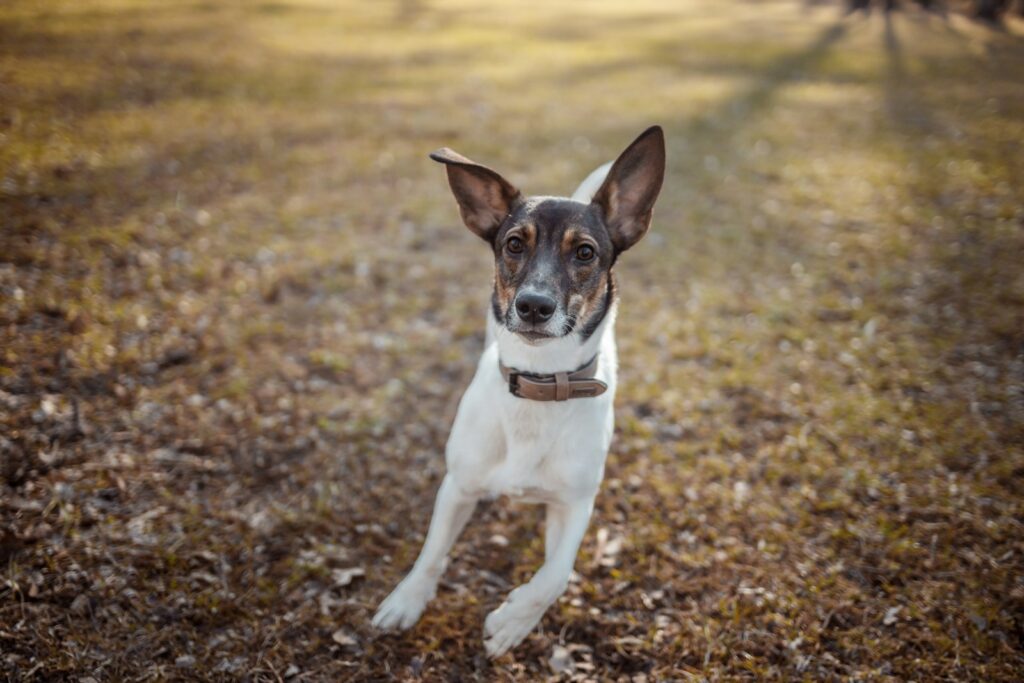
It’s common for dogs to jump on their owners out of excitement, but if they do it excessively, it can indicate a lack of impulse control or anxiety. Some dogs struggle to calm themselves down after being alone for long periods, while others may be trying to demand attention. Proper training can help them greet people in a calmer, more controlled way.
Chasing their tail
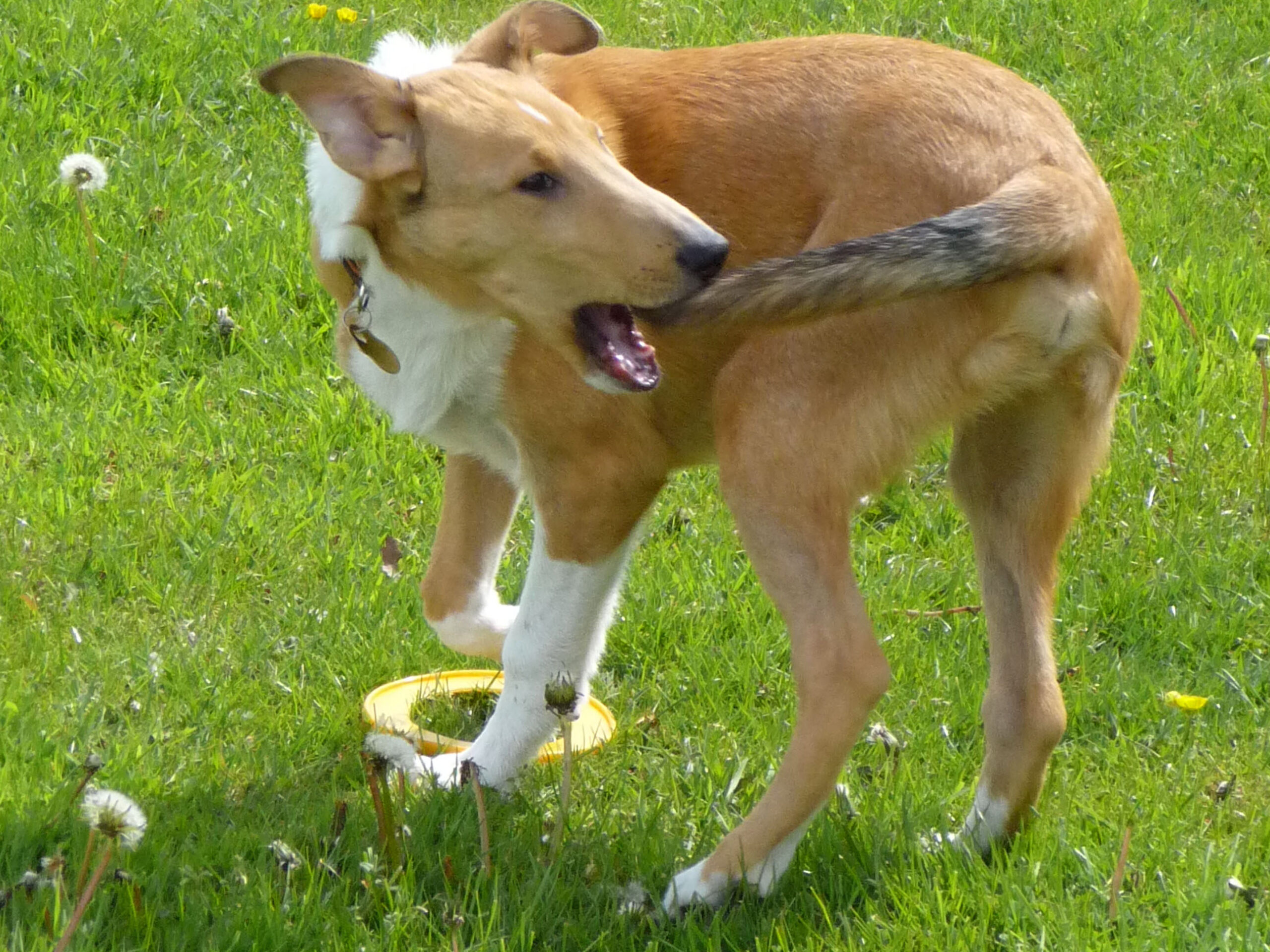
A playful tail chase every now and then is normal, but repetitive, obsessive tail-chasing can signal anxiety, compulsive disorder, or even a neurological issue. Some dogs develop tail-chasing habits due to boredom, while others may be reacting to skin irritation or underlying pain. If your dog is fixated on chasing their tail, it’s worth investigating further.
Spinning in circles before lying down

Many dogs spin before lying down as part of an instinctual behavior to create a comfortable resting spot. However, if your dog spins excessively or seems unable to settle down, it could indicate anxiety, restlessness, or even pain from arthritis or a neurological issue. If this behavior becomes more frequent, a vet visit may be necessary.
Burying food or treats instead of eating them
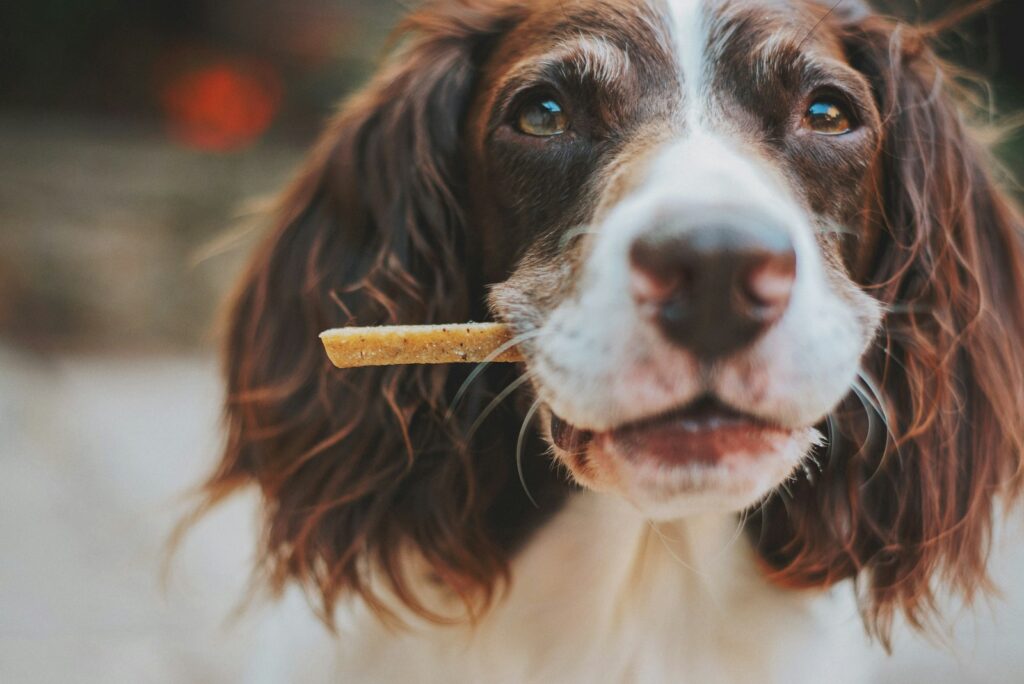
Some dogs instinctively bury their food as a leftover survival instinct from their ancestors. However, if they frequently bury their food instead of eating it, it could indicate insecurity, stress, or digestive discomfort. Dogs that feel anxious may hoard food as a response to feeling unsafe, while those experiencing stomach issues may avoid eating altogether.
Staring at you intensely without blinking
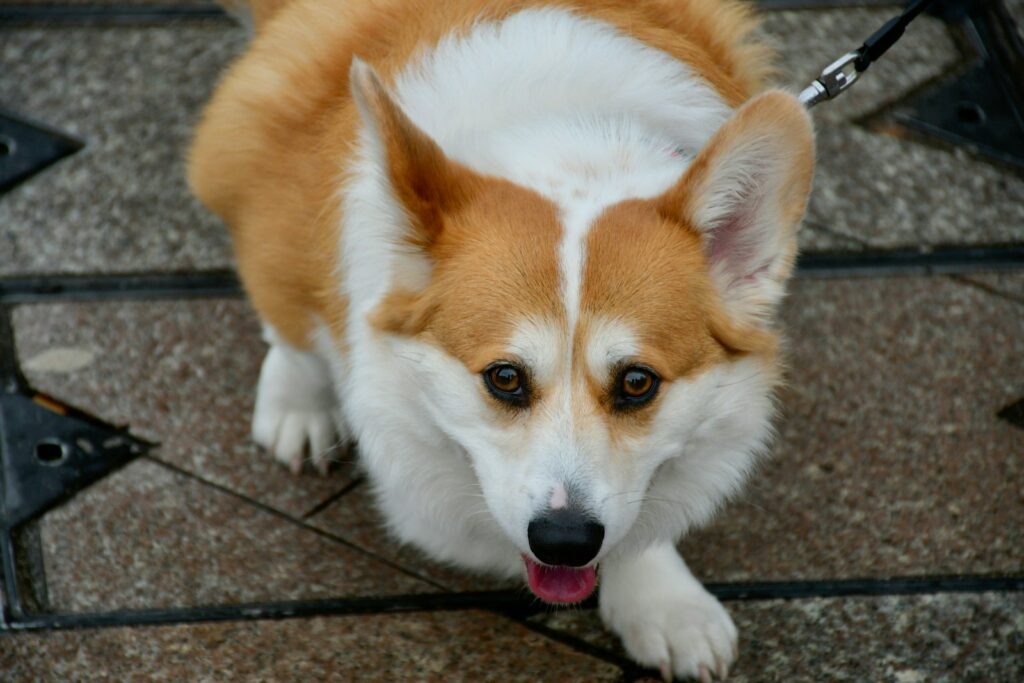
It can be cute when your dog locks eyes with you, but prolonged, intense staring can be a sign of discomfort, unease, or even aggression. While some dogs do this as a way of bonding, others may be feeling threatened or trying to assert dominance. If their stare seems tense or stiff, it’s best to observe their overall body language for additional clues.
Chewing on furniture or objects obsessively

Puppies often chew to relieve teething pain, but adult dogs that chew furniture or random objects excessively may be experiencing anxiety, boredom, or nutritional deficiencies. Some dogs chew compulsively as a way to cope with stress, while others do it when they lack proper mental stimulation. Providing chew toys and interactive play can help address the issue.
Yawning frequently when not tired
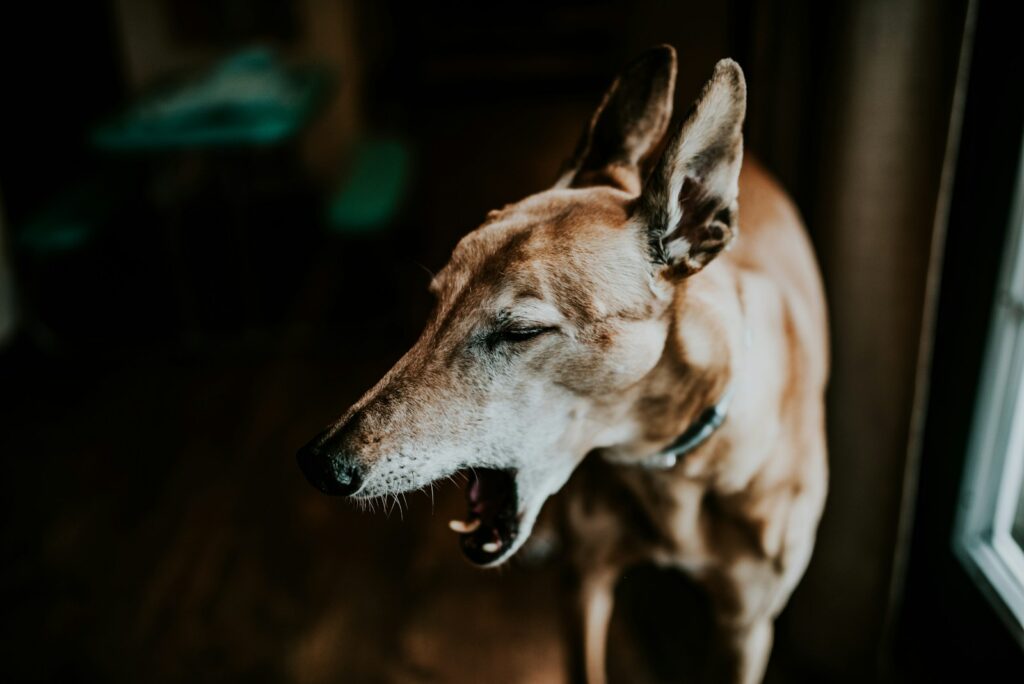
Dogs yawn when they’re sleepy, but excessive yawning can also be a sign of stress or discomfort. If your dog yawns frequently in social situations, around new people, or during training, they may be feeling overwhelmed or anxious. Paying attention to when the yawning occurs can help determine whether it’s relaxation or stress-related.
Constantly nudging you for attention

It’s endearing when a dog nudges your hand for affection, but if they do it persistently, it could be a sign of anxiety or insecurity. Dogs that are overly dependent on attention may struggle with confidence and have trouble being alone. Encouraging independent play and setting boundaries can help prevent this from becoming a compulsive behavior.
Sitting on your feet

Many people find it adorable when their dog sits on their feet, seeing it as a sign of love and affection. While this is sometimes true, it can also indicate possessiveness or insecurity. Some dogs sit on their owner’s feet as a way of claiming them or seeking protection. If your dog does this excessively, it might be a sign that they feel anxious about their surroundings and need reassurance.
Huffing or sighing loudly

It can be cute when a dog lets out a big, dramatic sigh, making it seem like they are fed up with life. However, frequent sighing or huffing can indicate stress, discomfort, or even respiratory issues. Dogs sigh to release tension, but excessive sighing could mean they are feeling anxious, frustrated, or even in pain. If your dog does this often, it’s worth observing their overall behavior for other signs of distress.
Lifting one paw while standing still

A dog lifting their paw can look adorable, especially when they do it while waiting for a treat. However, if they frequently lift one paw while standing still, it may indicate discomfort or pain in their leg. In some cases, this behavior is linked to anxiety or uncertainty, particularly if they are in an unfamiliar environment. If your dog consistently lifts their paw and avoids putting weight on it, a vet check-up is necessary.
Barking or whining in their sleep

It’s common for dogs to twitch or make small noises in their sleep, which is often linked to dream activity. However, excessive barking, whining, or even howling while sleeping could indicate pain, anxiety, or neurological issues. If your dog frequently seems distressed while sleeping, it could be a sign that they are in discomfort or experiencing nightmares related to past trauma.
Leaning against walls or furniture frequently
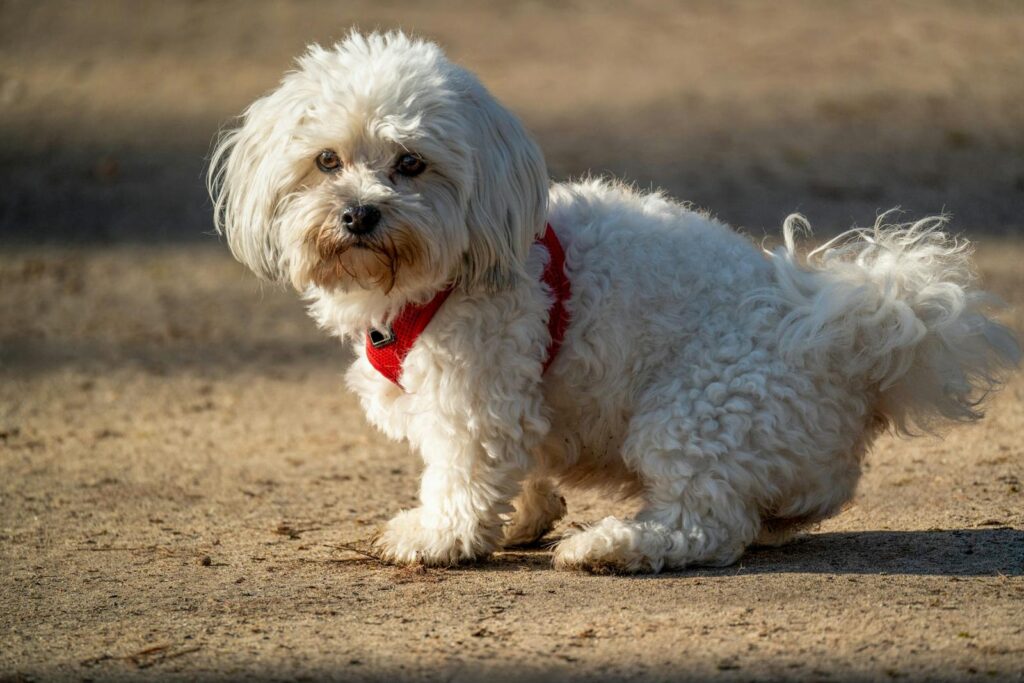
It might look cute when a dog leans against walls, furniture, or even their owners for support. While some dogs do this to show affection, frequent leaning can be a sign of balance issues, joint pain, or neurological problems. Older dogs with arthritis often lean to relieve pressure on painful joints. If your dog starts leaning excessively or has trouble standing up after, it’s best to consult a vet.
Shaking off when they’re not wet

Dogs naturally shake off water after a bath or when coming in from the rain. However, if they frequently shake themselves off in dry conditions, it can be a sign of stress or discomfort. Dogs use this behavior to “reset” after a tense interaction or to shake off anxiety. If your dog does this often, especially after social encounters, it may indicate nervousness or overstimulation.
Snapping at the air or biting at nothing

Some dogs occasionally snap at the air as if they are catching invisible bugs, which can seem funny or playful. However, if your dog does this frequently, it could indicate a neurological disorder, obsessive-compulsive behavior, or even an undiagnosed medical issue such as focal seizures. If this behavior becomes excessive, a vet visit is recommended.
Showing the “whale eye”
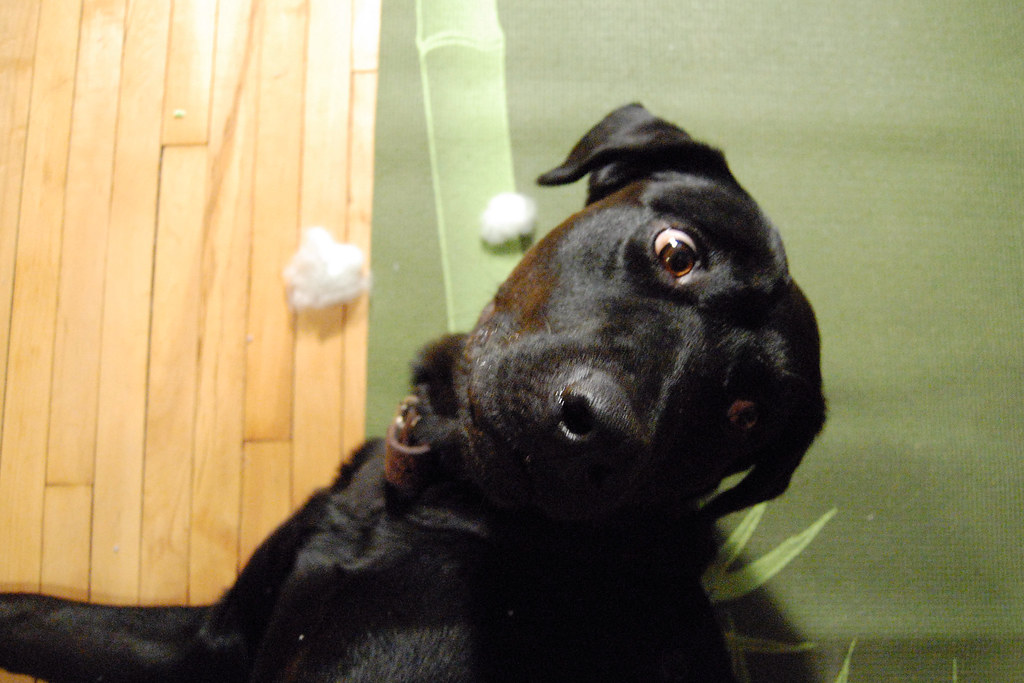
The “whale eye” occurs when a dog turns their head while keeping their eyes locked on something, exposing the whites of their eyes. While it can look funny, it’s often a sign of discomfort, stress, or fear. Dogs may show whale eye when they feel cornered or anxious. If your dog frequently does this in certain situations, it may be a sign they are uncomfortable and need space.
Pacing back and forth frequently
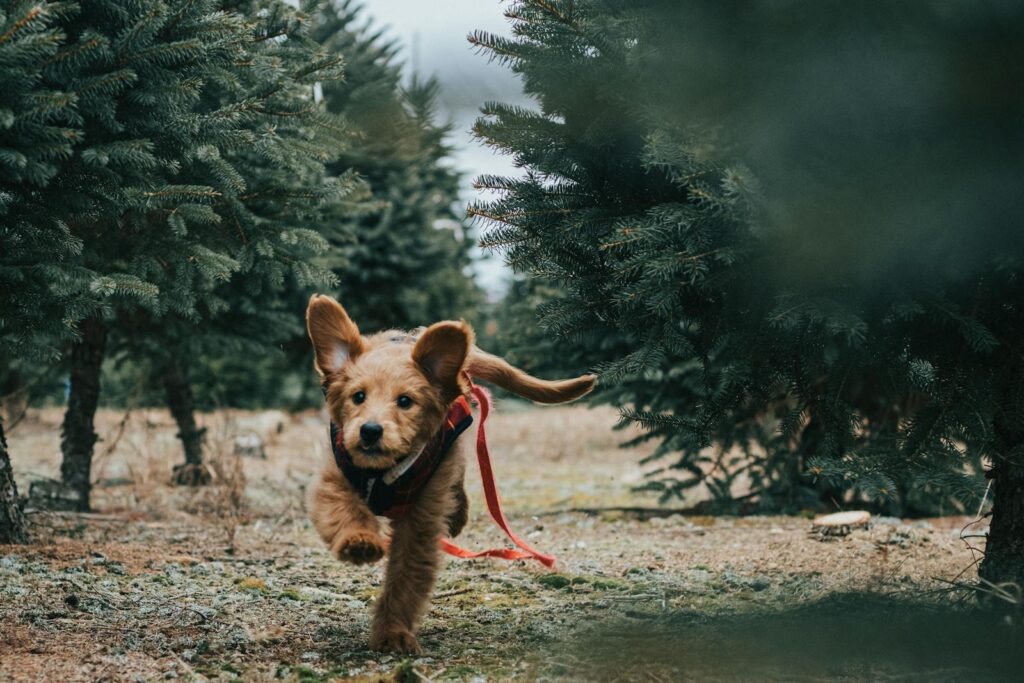
Some dogs pace when they’re excited or anticipating something, like a walk or mealtime. However, frequent pacing without an obvious reason can indicate restlessness, anxiety, or even cognitive decline in older dogs. If your dog seems unable to relax and constantly moves around, they might be experiencing stress, nervous energy, or an underlying medical issue.
Smiling or baring their teeth

Some dogs appear to “smile” by pulling back their lips, which can look endearing. However, in certain situations, baring teeth is actually a warning sign that a dog is feeling defensive or threatened. If a dog’s body language is tense or their ears are pinned back while they are “smiling,” it may be a sign of fear rather than friendliness. Understanding the full body language of your dog is crucial to interpreting this correctly.
Excessively licking or nibbling at people
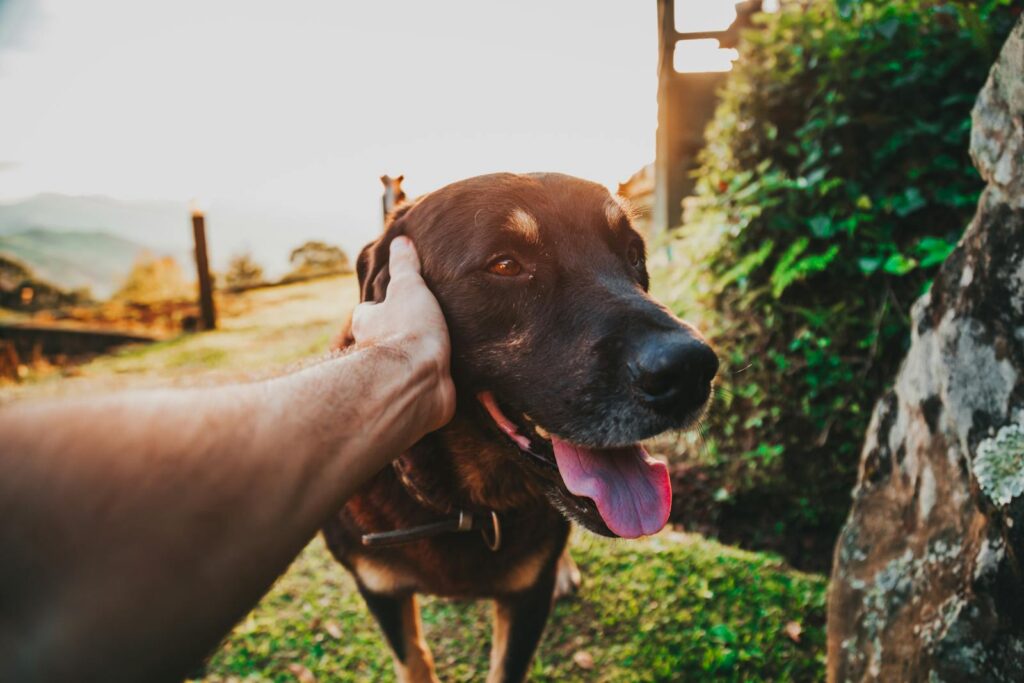
It’s cute when a dog gives gentle licks or nibbles on your hand, but excessive licking or nibbling can be a sign of anxiety, stress, or compulsive behavior. Some dogs use licking as a way to self-soothe, while others might do it as a sign of submission. If your dog constantly licks or nibbles at you, especially when they seem restless, they may be feeling overwhelmed or insecure.
Sudden change in playfulness
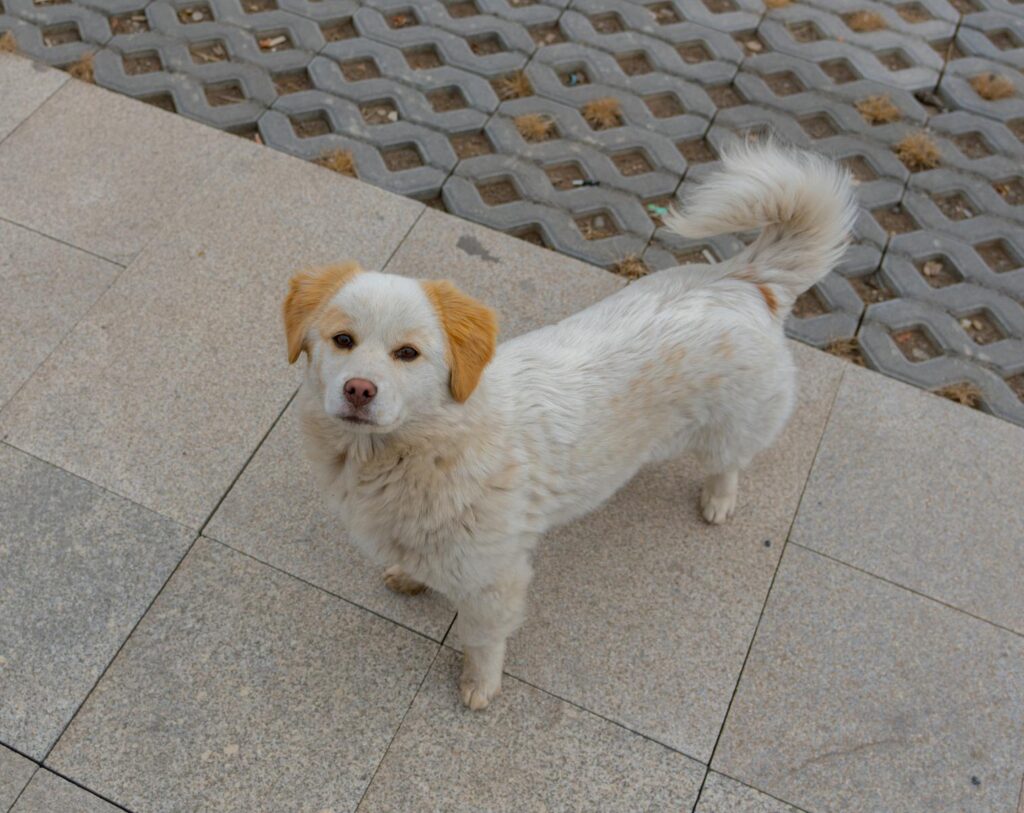
If a typically playful dog suddenly loses interest in toys, fetch, or socializing, it can be an early sign of an underlying health issue. Decreased enthusiasm for play can be linked to pain, depression, or even cognitive decline in aging dogs. If your dog is no longer engaging in activities they once loved, a check-up can help rule out health concerns.

